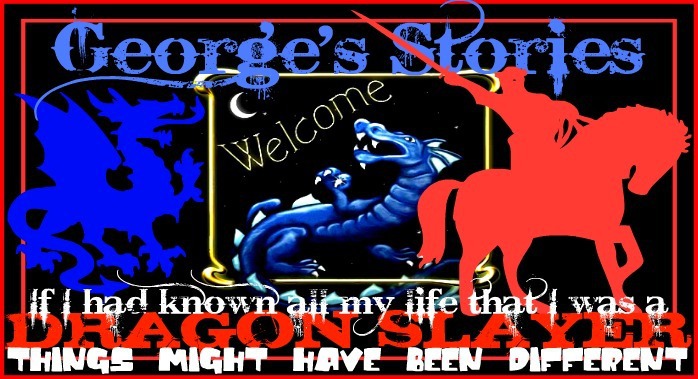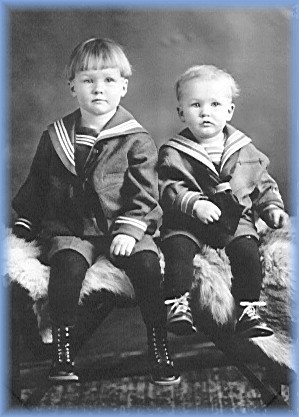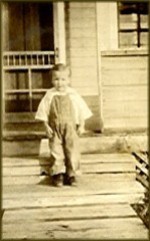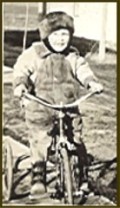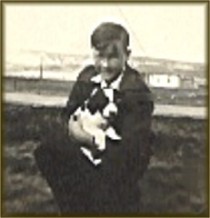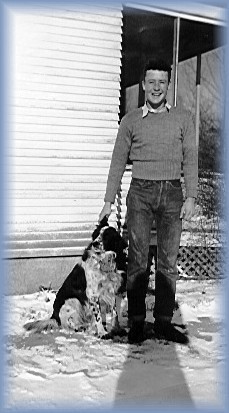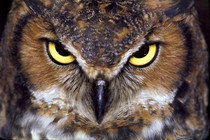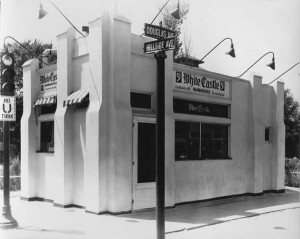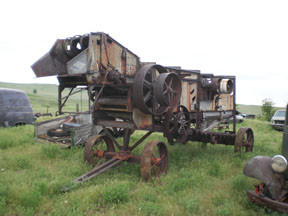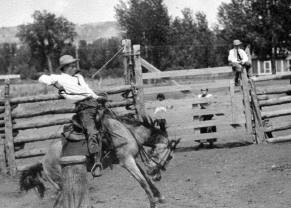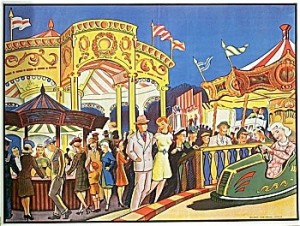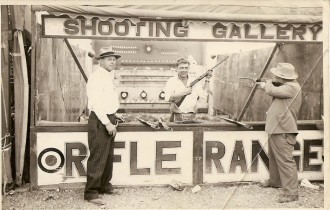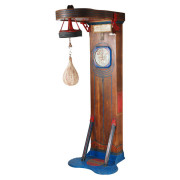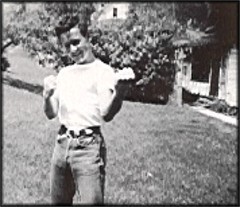During this time we lived in a larger house---3 small bedrooms---living room, kitchen---no baths. Running water or electricity---enclosed back porch---screened-in front. It was
still about 3 miles north of Sheridan and about 1/2 mile west of the Star Coal Mine. The house was sited on about 20 acres with Big Goose creek as the south boundary. There were many thousands of
acres to the north and west---wooded along the stream bed and brushy pastures---ideal for hunting except that there was very little game of any kind.
For several years my father raised chickens for fryers and the eggs while he worked at the mine. But it wasn't really that way at all---my
brother and I raised the chickens---the daily chores---feeding, watering, gathering eggs, cleaning the roosts of the chickens---and scattering straw when needed---washed the eggs and graded them
according to size---crated them for delivery to the grocery store in town for credit for groceries.
We always went bare-footed every summer and I became a really great open field runner by running through the chicken yard---not always
without mishaps.
Money Making Propositions
June, my younger sister, remembers that apparently, one of the ways Andrew (Dad) made money was by always returning to the mine on Monday
with a load of fresh timber. This allowed us the use of the "International" truck while we were up there. Grandpa paid Dad for the timber, but I have no idea how much. Another money making effort I
recall is candying the eggs for sale, or putting them down in grease. We also sold chickens, which we regularly plucked on Saturday mornings, I think. (I also recall putting carrots and potatoes down
in sand in the root cellar for our family's use during the winter. Did we ever sell produce from the garden! Mom also recalled the year Paul was without work when Jerry was a tot (the year I was
born?), how she and Dad would drive in to the Egbert's house once a week and fill their refrigerator and pantry with enough food for the week, mostly when they knew that Pauline and Paul weren't
home. Nobody talked about it . . . they just DID it!
George notes that in June's memory above, Paul Egbert was Violette's brother, Pauline was his wife, and Jerry was their son and only
child.
1931-39: Chores and More Chores
As a boy, I remember spending a lot of time digging out a partial basement under the house---using a pick and shovel---hauling out the dirt,
2 buckets-full at a time. The digging under the house made a cellar rather than a basement---we left a 3-ft ledge in from the foundation which provided lateral support. The floors and walls were not
finished with concrete. There were lots of shelves for home canned foodstuff---always home-made root beer---sometimes real beer too.
Chores. I shingled the sidewalls of the garage. I irrigated the garden---chopped wood---cleaned and filled all the kerosene lamps---pumped
buckets of water and carried them into the house, and to two rows of transplanted cottonwood trees. Every day I carried my father's lunch pail to the mine. It really was a pail---a round aluminum
pail about 8" in diameter and 12" tall---filled with liquid in the bottom, with a top compartment for the lunch.
Then, in the winter time on Saturday afternoon, my father's Model A Ford Sedan had to be made ready for starting. We used the car once a
week to shop in town---sometimes we went to a movie on Sunday. First a pan of hot coals from the kitchen stove was placed under the crankcase---then the radiator had to be filled with hot water (from
the water reservoir of that same stove) and finally the radiator and hood was covered with an old quilt or blanket. It was usually started before we were ready to leave to allow it to warm up. In
town the radiator and hood had to be covered with that same quilt to keep in the heat and to keep it from freezing up. No anti-freeze!!!!!
These were some of my favorite chores . . . . .
